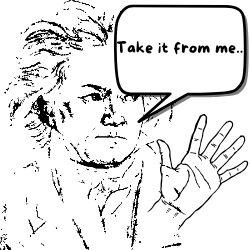 Beethoven’s “Für Elise” stands as one of the most recognizable and beloved piano compositions in the classical repertoire. Its haunting melody and delicate harmonies have captivated listeners for centuries. While the piece as a whole showcases Beethoven’s genius, one particular element that has intrigued both pianists and enthusiasts alike is the left hand accompaniment pattern.
Beethoven’s “Für Elise” stands as one of the most recognizable and beloved piano compositions in the classical repertoire. Its haunting melody and delicate harmonies have captivated listeners for centuries. While the piece as a whole showcases Beethoven’s genius, one particular element that has intrigued both pianists and enthusiasts alike is the left hand accompaniment pattern.
Simple Yet Effective
At the core of “Für Elise” lies a simple yet effective left hand pattern: the use of the root (1), perfect fifth (5), and octave (1) of the chord progression. This pattern, similar to a broken chord or arpeggio (though this pattern consists of an incomplete chord), provides a solid foundation for the piece’s melodic intricacies and adds depth to its overall texture.
The left hand begins with the tonic note, in this case, A, followed by the perfect fifth, E and then returns to the octave of the tonic, A. This pattern repeats throughout the piece, creating a rhythmic and harmonic backdrop that supports the melody played by the right hand.
What makes this left hand pattern so effective is its versatility and adaptability. While it was originally composed for “Für Elise,” pianists and composers have since utilized it in various contexts, demonstrating its applicability beyond Beethoven’s masterpiece.
In addition to “Für Elise,” this left hand pattern can be found in numerous other standard songs across different genres and styles. From jazz standards to pop hits, its use transcends classical music boundaries, showcasing its timeless appeal and effectiveness in enhancing musical compositions.
Use Beethoven’s Left Hand Pattern In Your Own Playing
One example of its application outside of classical music is in jazz standards such as “Autumn Leaves” and “Fly Me to the Moon.” Pianists often incorporate the left hand pattern to create a swinging groove while improvising melodic lines with the right hand. This juxtaposition of rhythmic stability and melodic freedom is a hallmark of jazz piano playing and highlights the versatility of the left hand pattern.
Furthermore, in popular music, artists and songwriters frequently use the left hand pattern to establish a rhythmic foundation in ballads and pop songs. Whether it’s accompanying a heartfelt ballad or driving a catchy pop melody, the simplicity and effectiveness of the pattern make it a staple in contemporary music production.
Less Is More
Beyond its practical applications, the left hand pattern in “Für Elise” symbolizes Beethoven’s innovative approach to composition. Despite its seemingly simple nature, the pattern adds depth and complexity to the piece, showcasing Beethoven’s mastery of musical form and structure.
In conclusion, Beethoven’s iconic left hand pattern in “Für Elise” serves as a testament to the enduring power of musical motifs. Its widespread adoption across different genres and styles highlights its universal appeal and timeless significance in the world of music. Whether in classical masterpieces or contemporary hits, the left hand pattern continues to captivate audiences and inspire musicians worldwide.
